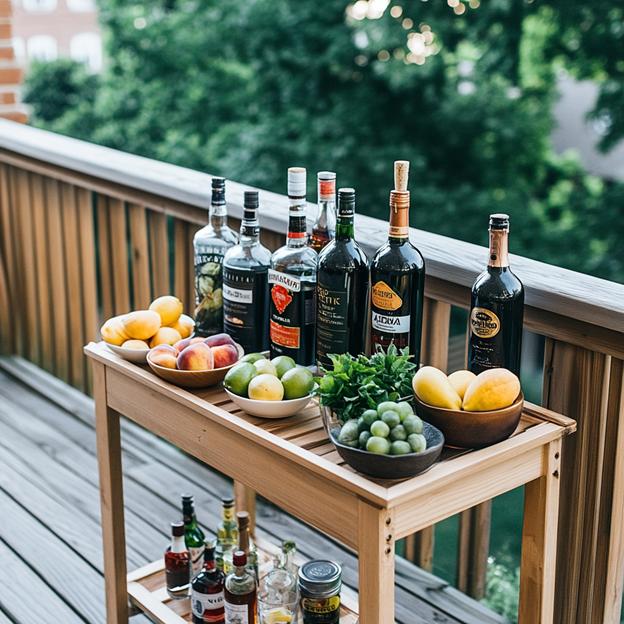There’s nothing quite like a cold beer on a Friday night! After the work is over — and particularly when it’s a hot weekend — there are few better ways to relax than to crack open a cold beer or two with friends or family.
But what exactly does cold mean? Everyone knows that it can be unpleasant to have a beer that’s been left out and has gotten too warm. But can a beer get too cold? And if you need to chill a beer quickly — how long to get a beer cold in the freezer?
If you are a serious beer drinker, these are important questions to ask. Do you know what the best temperature for a cold beer to be served is? Let’s explore the ideal temperature range for serving up a cold one. Read on to learn about the best temperature to serve an ice-cold beer, and how to ensure you are drinking your beers at the optimal temperature.
Different Types of Beers
As every beer drinker knows, all beer is not created equal. Even before considering the different breweries, it is important to know all about the main different types of beer, as well as some of their top characteristics.
Ales and Lagers
There are two basic types of beer: ales and lagers. You have almost certainly tried both types, even if you didn’t know it.
The main difference is in how the beers are brewed. Ales are fermented faster (in a matter of weeks) with top-fermenting yeast at warm temperatures. Lagers, on the other hand, ferment over a period of months with bottom-fermenting yeast at cold temperatures.
Of course, there are many subtypes to both types of beers, which is where the fun really comes in.
Pale Ales
Pale ales are — you guessed it — a type of ale. It is an English style in origin and generally has a light and fruity taste, and is not too dark in color.
A popular variation on pale ales is the American pale ale, which tends to be a little hoppier than the British version.
India Pale Ales
India pale ales (IPAs) have become all the rage in recent years, and are a popular choice for small craft breweries. IPAs are very hoppy and can be somewhat bitter, though there are a variety of flavors — especially citrus flavors — that frequently get blended in.
Brown Ales
While perhaps a less conventionally popular type of ale, brown ales are certainly unique and every beer drinker should be familiar with them. They have a more caramel color (and often taste) and can be somewhat heavier than a pale ale. They vary quite a bit from each other, so it’s important to try a few to figure out what you like.
Sour Ales
By far one of the tastiest (and strangest) types of ale, sour ales use wild yeasts to give the beer a tangy and tart taste. These, too, are often mixed with fruits, spices, and other flavors to create interesting combinations.
Wheat Beer
Beers brewed with wheat are usually (if not always) made as ales. They tend to have a softer flavor but may have interesting citrus or other notes blended in.
Porters and Stouts
Porters and stouts are both darker types of ales. The two have dark and roasted flavors, and have creamy elements, though porters are sweeter than stouts.
Pilsner
A pilsner is one of the most popular types of lagers. They have hoppy and dry flavors and a lighter color.
Bock
Bock beers are another type of lager, with German origins. It’s not everyone’s favorite choice, but if you like a beer with sweet and strong flavors, it might be good for you!

What Else To Know About Beer Types
As a regular beer drinker, knowing the different varieties you can choose from is extremely important. But what else should you know to make sure you’re having the best experience possible?
IBUs and ABV
One thing to keep in mind is IBUs. IBU stands for “international bitterness unit,” and is essentially a measurement of how bitter a given beer is (over 100 means the most bitter, 0 means the least bitter).
However, don’t always assume that a high IBU number means an extremely bitter beer. Depending on the brewing style, other flavors or ingredients can sometimes mask the bitterness of a given type of beer.
ABV is another important acronym to know in the beer-drinking world. ABV stands for “alcohol by volume” and refers to the strength of a given beer. Many beers have a relatively low ABV (about 3, 4, or 5%) but some beers can be well over 10%. This is another important detail to consider, because sometimes, drinking an especially strong beer may be equivalent to having two or three drinks. Plus, again depending on the brewing style, the strength of a beer can sometimes be masked. Remember, it’s always important to drink responsibly!

So What’s the Best Temperature For an Ice Cold Beer?
If you’re just looking for a cold beer on a Friday night, you may not be too concerned about type, and about chilling beers “the right way.” But if you take your beer drinking seriously, it’s important to consider a few things when determining temperature.
First, know that different beers should be served at different temperatures according to the American Homebrewers Association. While all beers should arrive somewhere from 38° F to 55° F, that’s obviously quite a range.
- Lagers are best served cold, generally below 40° — however, stronger lagers (and stronger beers) in general should be served closer to 50°
- Don’t serve darker beers as cold as lighter beers
- Serve wheat beers colder than pale ales and IPAs
Also, don’t forget that beers warm up once out of the fridge and in someone’s hand — so if possible, chill them a few extra degrees to start.
Go ahead and experiment, and find your favorite beers and the best temperatures to serve them!
Get Your Beer Today
Zipps Liquor has a variety of beer, wine, and other alcohol. We have all the best brands and even better prices.
For more information, stop by one of our liquor stores!









